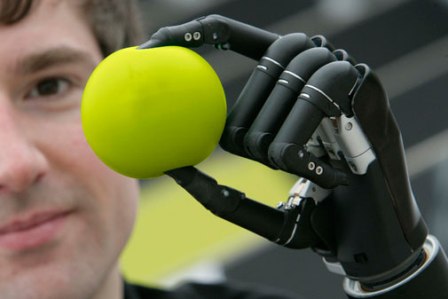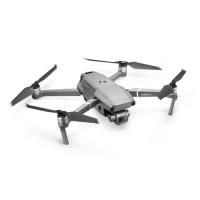he term cyborg (cybernetic organism) was coined by Manfred Clynes and Nathan Kline in 1960 in a paper titled "Cyborgs and Space." This term was used to describe their vision of a person whose body has been artificially enhanced to deal with the harsh environment of space travel. According to them, the enhancement would include a heart controlled with drugs and a nuclear-powered inverse fuel cell lung. Their vision hasn't been realized yet, but medical and military technology has created cyborgs by replacing organs and limbs, making exoskeletons to reduce fatigue in battlefields and support disabled individuals.
Robotics will become so integrated in our daily lives, eventually it will be like getting in your car in the morning to go to work. The Raytheon Sarcos Exoskeleton, the Cyberdine Human Assistive Limb Exoskeleton (HAL), the Lockheed Martin Human Universal Load Carrier (HULC), Honda Experimental Walking Assist Device and the MIT Exoskeleton are designed to be one with the user. Although some of the units are only in developmental stages at the moment, the HULC, HAL and the Honda Experimental Walking Assist Device could be in the market very soon.
Pictured: the i-LIMB Hand.
While these units are standalone devices that have to be worn, for lack of a better term, new prosthetic devices are literally turning people into cyborgs. Current medical technology is making it possible to hear with cochlear implants, walk or grab with new generation prosthetics, and bionic eye implants will be hitting the U.S. market in late 2013, allowing people who are completely blind to see enough to dramatically improve their livelihood.
Our vision of cyborgs is greatly influenced by science fiction where robotic parts are seamlessly integrated with human beings. People that have lost limbs in wars, accidents or from birth defects are the closest thing we have to our imagined view of a cyborg. Touch Bionics, a company established by David Gow in Scotland, is the creator of the most advanced prosthetic system currently in the market. In 2007, Touch Bionics launched the i-LIMB Hand; this prosthetic was the first of its kind to have a powered hand with articulating fingers. The independently moving digits are able to open and close just like real fingers, allowing the user to grip objects in a way that is more anatomically correct than previous technology.
The technology that is available today is much more advanced than what was available 10 years ago, but it is nothing compared to what researchers have in mind. When technology begins to merge with human physiology in this way, ethical questions are raised.
Our insatiable appetite to learn and improve our condition is leading us down a road that is improving many of evolution’s shortcomings. Just last week, doctors in England said they were drafting regulations to send to Parliament for a three-person in vitro fertilization (IVF). The procedure is designed to give parents the option of removing the genes for some of the most deadly diseases affecting people around the world, but some are already objecting to this development, saying designer babies will be created to make them smarter, taller and stronger. If it is approved, doctors can start saving lives by the end of 2014; the designer babies will come later on.
Whether it is sending our children to the best schools, choosing to get elective surgery or living in an exclusive community, everything we do is designed to give us a heads-up over the person next to us. There are those who will argue the ethics and morality of it, but those who can afford the technology will get it, just like people who are able to afford the $50,000 plus price tag of the i-LIMB and those that have to endure the limitations and daily frustration of traditional hand prosthetics.




